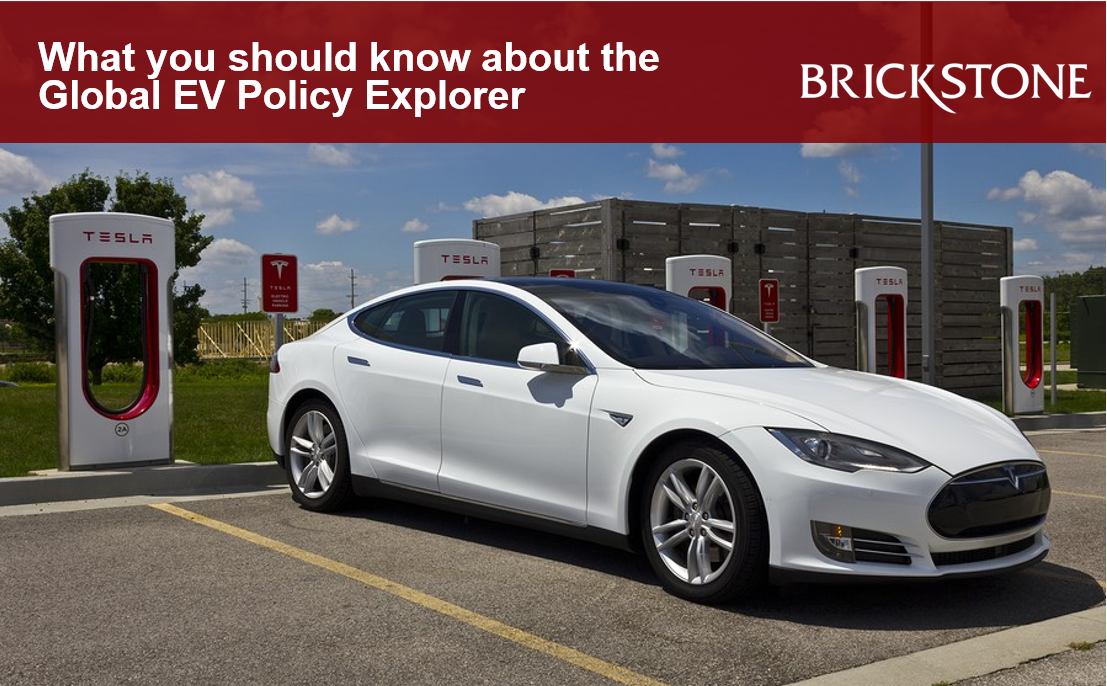What you should know about the Global EV Policy Explorer
This article by Brickstone reviews the Global EV Policy Explorer, and key things you should know about it.
The Global EV Policy Explorer
According to Statista, the global transportation sector is one of the largest contributors to Greenhouse gas emissions, and in 2020 produced approximately 7.3 billion metric tons of carbon dioxide (CO2) emissions. Accordingly, passenger cars were the biggest source of emissions that year, accounting for 41 percent of global transportation emissions.
Many climate experts agree that the electrification of the sector will be crucial in realizing global efforts and actions to alleviate climate change and its adverse impacts on global economy, health, and agriculture. In the same vein, the World Bank affirmed that electrifying the transportation sector coupled with a clean electric grid is a valued pathway to reaching carbon neutrality.
Aside addressing climate change, the IEA stated that electrifying transport also helps ameliorate air pollution, and oil import dependency. As a result of these advantages and potentials, several countries have made switching to electric cars a priority in their plans to reach their climate goals – to reach a net zero by 2050. This has made the sales of electric cars (including fully electric and plug-in hybrids) doubled in 2021 to a new record of 6.6 million, with more now sold each week than in the whole of 2012.
However, as reflected in countries that are actively involved in the production and sale of Electronic vehicles (EV), a right and sustained policy, legal framework and proper implementation, is required to drive the sales of such vehicles in many markets. This can also stimulate exponential growth in such countries, and attract the required financial, technological and human resources for implementation.
The Global EV Policy Explorer which was created for this purpose by the International Energy Agency (IEA), contains policies and measures that support the deployment of electric vehicles (EVs) and zero-emission vehicles (ZEVs) for light-duty and heavy-duty vehicles. It tracks countries that have taken key policies, measures, targets and ambitions that support EVs.
According to the IEA, these policies and measures ensured by the Global EV Policy Explorer take a variety of forms, e.g. fuel economy standards, CO2 emissions standards, deployment roadmaps, and sales or stock targets and ambitions. Also, they are structured in four categories: Legislations, Targets, Ambitions and Proposals.
While Legislations in the Global EV Policy Explorer refers to legally binding commitments such as regulations, policies, and standards, targets are announced government targets incorporated in legislations, budgetary commitments, Nationally Determined Contributions to realise the Paris Climate Agreement or national climate plans such as those submitted by member states to the European Union.
Ambitions are government goals or objectives as set out in a policy document such as a deployment roadmap or strategy.
Lastly, Proposals are government goals realised in public documents or contained in legislations designed to stimulate discussion as to their feasibility.
Unfortunately, only four African countries fall within the categories of countries tracked by the Global EV Policy Explorer. The countries include South Africa, Kenya, Egypt, and Cabo Verde.
Read more on Global EV Policy Explorer here.





